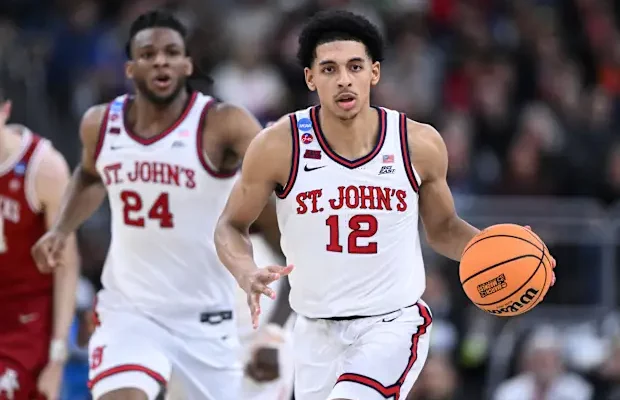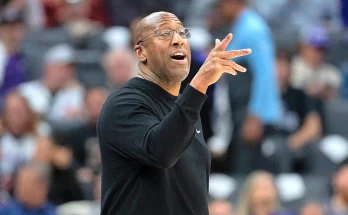The Boston Celtics have long been recognized as a franchise that blends historical prestige with a keen eye for strategic roster moves, and their recent maneuvers leading up to the Utah Jazz trade underscore that reputation. Reports indicate that before the blockbuster deal with Utah was finalized, Boston actively pursued a two-way forward, demonstrating the team’s forward-thinking approach and desire to secure talent that could provide depth, versatility, and long-term upside. While the details of the initial pursuit remain under wraps, insiders suggest that Boston’s interest in this player was motivated by multiple factors, including positional flexibility, the evolving style of play in the NBA, and the team’s long-term roster planning.
The pursuit of a two-way forward is a nuanced decision for any team, particularly one like the Celtics, who balance championship aspirations with roster management considerations. A two-way player offers the franchise not only cost-effective talent but also the ability to seamlessly integrate into multiple lineups, covering for injuries, absences, or tactical shifts during games. By seeking to sign this forward prior to the Jazz trade, Boston signaled an understanding that success in the modern NBA requires both star power and a deep bench capable of maintaining high performance over an 82-game season and into the playoffs. In many ways, this pre-trade attempt reflects Boston’s willingness to explore every avenue for adding young talent while simultaneously protecting the team’s core.
Timing played a critical role in Boston’s approach. The pursuit occurred in a window where trades and signings often shift quickly, with teams negotiating, evaluating cap space, and considering the implications of each move. For Boston, acting quickly to bring in a two-way forward was likely an attempt to secure talent before the Jazz finalized any potential deals that could have made the player unavailable. In the complex chessboard of NBA roster management, acting decisively can mean the difference between acquiring a promising talent and missing out entirely, a lesson the Celtics have applied repeatedly in past drafts, trades, and free agency periods.
The eventual trade with the Utah Jazz was a significant pivot in Boston’s roster strategy, demonstrating the team’s adaptability. While the initial attempt to sign the two-way forward directly may not have immediately yielded results, the subsequent deal allowed the Celtics to acquire valuable assets in a manner that also addressed salary cap considerations and team chemistry. The Jazz trade involved multiple moving pieces, highlighting how a missed signing opportunity can often transform into a strategic trade that benefits both teams. In Boston’s case, the flexibility demonstrated in pursuing the two-way forward and then pivoting to trade negotiations reflects a front office deeply aware of the delicate balance between talent acquisition, financial prudence, and long-term team construction.
The importance of two-way forwards in today’s NBA cannot be overstated. These players are often expected to contribute in multiple dimensions—defending multiple positions, stretching the floor with perimeter shooting, and providing the energy and hustle plays that can shift the momentum of a game. For a team like the Celtics, whose roster is built around elite wings and versatile forwards, securing a two-way player adds insurance against potential injuries to star players, while also offering developmental opportunities for younger talent. Moreover, such players can serve as critical rotational pieces during playoff runs when matchups, minutes management, and tactical adjustments become essential to success.
Beyond immediate on-court impact, pursuing a two-way forward before executing a major trade underscores Boston’s commitment to maintaining competitive depth. Depth has become a hallmark of championship-caliber teams, particularly in an era where player load management, frequent injuries, and the pace of play can challenge even the most talented rosters. By exploring the addition of a two-way forward, the Celtics not only aimed to address current needs but also demonstrated foresight in preparing for mid-season challenges and ensuring the team would be resilient across all phases of competition.
The attempt to sign the forward also reflects a broader trend in NBA roster management where teams are increasingly proactive in identifying talent through multiple channels. Rather than waiting for trades or high-profile free agents, franchises now leverage two-way contracts, G League performance, and advanced analytics to identify players who can make an immediate or future impact. Boston’s interest in a two-way forward fits this model perfectly. It showcases an organization that is willing to invest in scouting, evaluation, and quick decision-making to stay ahead of the competition.
Financial considerations undoubtedly played a role in this strategy. Two-way contracts are designed to allow teams to maximize flexibility while minimizing long-term financial risk, giving franchises the freedom to allocate salary cap space elsewhere. By targeting a two-way forward, Boston could have aimed to strengthen the roster efficiently without compromising future flexibility—a vital factor in the context of the Jazz trade, where multiple salaries and assets were exchanged. The combination of a pre-trade pursuit and a calculated trade demonstrates the Celtics’ sophistication in balancing immediate needs with financial prudence.
While the specific player involved in Boston’s pre-trade pursuit may not have immediately joined the team, the process itself yielded insights into the franchise’s operational philosophy. It illustrates how the Celtics approach talent acquisition as a multi-layered process involving evaluation, negotiation, timing, and strategic pivoting. Even in cases where a direct signing does not succeed, the information gained—such as player interest, fit with team culture, and potential trade leverage—can be invaluable in shaping subsequent decisions. The Celtics’ ability to convert initial efforts into advantageous trades reinforces the importance of persistence and adaptability in modern team building.
From a broader perspective, Boston’s attempt to sign a two-way forward prior to the Jazz trade highlights the increasingly competitive environment of the NBA. Teams must not only compete on the court but also navigate a complex market for talent that includes other franchises, agents, and regulatory frameworks such as the salary cap and collective bargaining rules. In this environment, strategic foresight and timely action are critical. The Celtics’ front office has consistently demonstrated an understanding of these dynamics, and this episode is yet another example of the franchise leveraging every tool at its disposal to maintain competitiveness and secure a sustainable advantage.
The trade with Utah ultimately became a vehicle for Boston to achieve multiple goals simultaneously: acquiring assets, managing the salary cap, and enhancing roster depth. However, the narrative of the pre-trade pursuit is equally important because it highlights the proactive mindset that underpins all major Celtics transactions. By attempting to sign the two-way forward directly, Boston revealed a commitment to exploring every viable path to roster improvement, even before considering broader trade options. This reflects a philosophy that champions initiative, calculated risk-taking, and responsiveness to the dynamic NBA landscape.
In conclusion, the Celtics’ efforts to secure a two-way forward before the Utah Jazz trade provide a compelling window into the team’s strategic thinking. This pre-trade pursuit reflects an organization that is detail-oriented, forward-thinking, and willing to act decisively in pursuit of both immediate and long-term roster enhancement. While the initial attempt may not have resulted in an immediate signing, the lessons learned and the subsequent execution of the trade with Utah demonstrate the team’s capacity to turn initial setbacks into strategic victories. Ultimately, Boston’s approach underscores a broader lesson about modern NBA team building: success requires not only elite talent on the court but also careful planning, adaptability, and an unwavering focus on maximizing opportunities wherever they arise. By combining these elements, the Celtics continue to position themselves as a model franchise, one capable of navigating complex transactions while steadily building a competitive, championship-ready roster.


